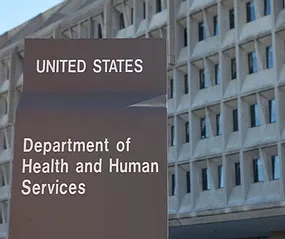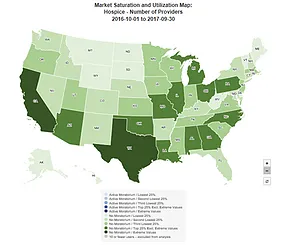CMS Makes Assessing Provider Market Saturation Easier with a New Interactive Database
- Ambulance (Emergency, Non-Emergency, Emergency & Non-Emergency)
- Cardiac Rehabilitation Programs
- Chiropractic Services
- Clinical Laboratory (Billing Independently)
- Federally Qualified Health Centers
- Home Health Independent Diagnostic Testing Facilities (Part A and Part B)
- Hospice
- Long-Term Care Hospitals
- Ophthalmology
- Physical and Occupational Therapy
- Preventive Health Services
- Psychotherapy
- Skilled Nursing Facilities
- The metrics that can be chosen are:
- Number of Fee-for-Service Beneficiaries
- Number of Providers
- Average Number of Users per Provider
- Percentage of Users out of FFS Beneficiaries
- Number of Users
- Average Number of Providers per County
- Number of Dual Eligible Users
- Percentage of Dual Eligible Users out of Total Users
- Percentage of Dual Eligible Users out of Dual Eligible FFS Beneficiaries
- Total Payments
Once a national map is generated, users can click on the relevant state, and then the relevant county, to get more specific data. (Below is a glimpse of the hospice provider market saturation data available for Georgia.)
Market saturation data are based on claims data instead of the provider’s practice address. A provider is defined as “serving a county” if, during the 12-month reference period, the provider had paid claims for more than ten beneficiaries located in a county.A provider is defined as “serving a state” if that provider serves any county in the state.
The tool is being used by CMS to monitor and manage market saturation as a means to help prevent potential fraud, waste, and abuse. CMS hopes the data will also be used to assist health care providers in making informed decisions about their service locations and the beneficiary population they serve.
We believe the interactive tool can be helpful to business appraisers, as the data provide insight regarding competitive risks and growth opportunities for businesses in the listed health service areas.
The tool is available through the CMS website at: https://data.cms.gov/market-saturation. Future releases may include additional health service areas.














